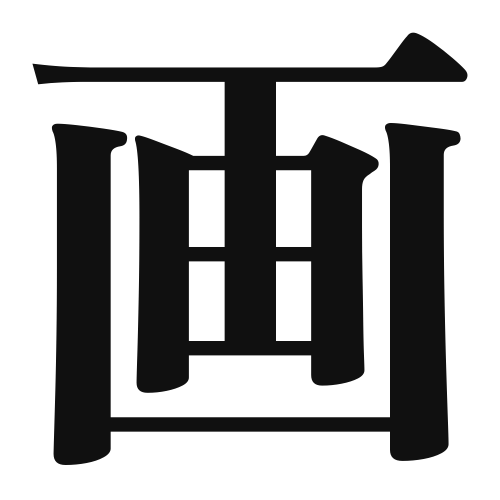1. Overview of Meaning
The kanji “画” (pronounced “ga” or “kaku”) primarily means “picture” or “drawing.” It refers to visual representations created through various artistic methods, including painting, sketching, and illustration.
2. Formation and Radicals
Formation of the Kanji: The kanji “画” is a phonetic-ideographic character (形声文字). It combines the meaning of “to carve” or “to cut” with a phonetic component that suggests its pronunciation.
Radical: The radical for “画” is “画” itself, which is often associated with art and drawing.
3. Examples of Usage
Common Words and Phrases: Some frequently used words that include “画” are:
- 絵画 (かいが, kaiga) – painting
- 画家 (がか, gaka) – artist
- 漫画 (まんが, manga) – comic
Example Sentences in Daily Conversation:
- 私は絵画が好きです。 (わたしはかいががすきです。) – I like paintings.
- 彼は有名な画家です。 (かれはゆうめいながかです。) – He is a famous artist.
4. Synonyms and Antonyms
Similar Kanji: A similar kanji is “絵” (え, e), which also means “picture” but is more specifically used for illustrations or drawings rather than the broader concept of “画.”
Antonyms: An antonym could be “消” (しょう, shou), which means “to erase” or “to disappear,” contrasting with the idea of creating a visual representation.
5. Cultural and Historical Background
Relation to Japanese Culture: The kanji “画” is deeply embedded in Japanese culture, particularly in traditional arts such as sumi-e (ink painting) and ukiyo-e (woodblock prints). These art forms have historical significance and are celebrated worldwide.
Proverbs and Idioms: One common idiom is “画竜点睛” (がりょうてんせい, garyou tensei), which means “to add the finishing touch,” referring to the importance of small details in completing a work of art.
